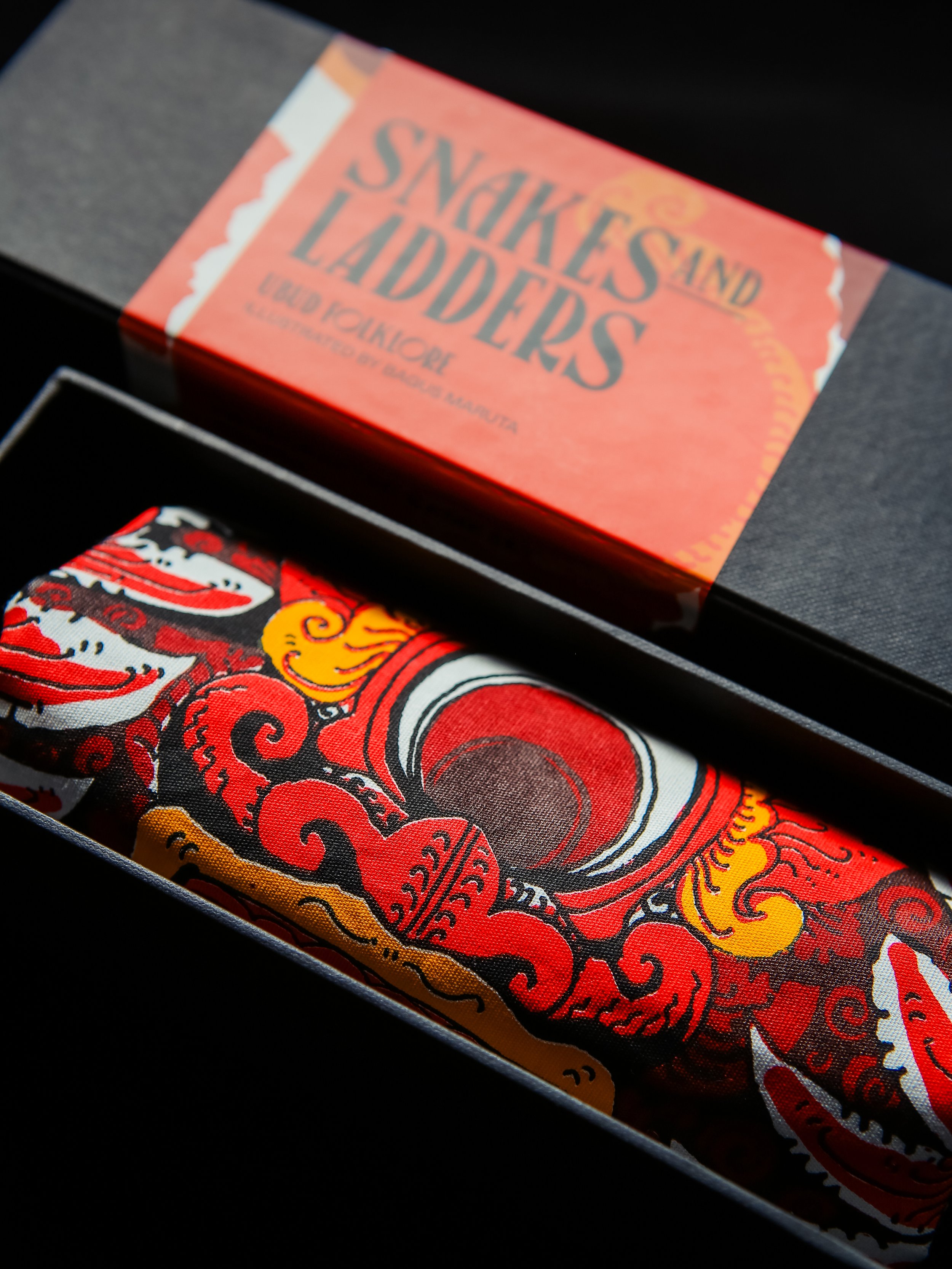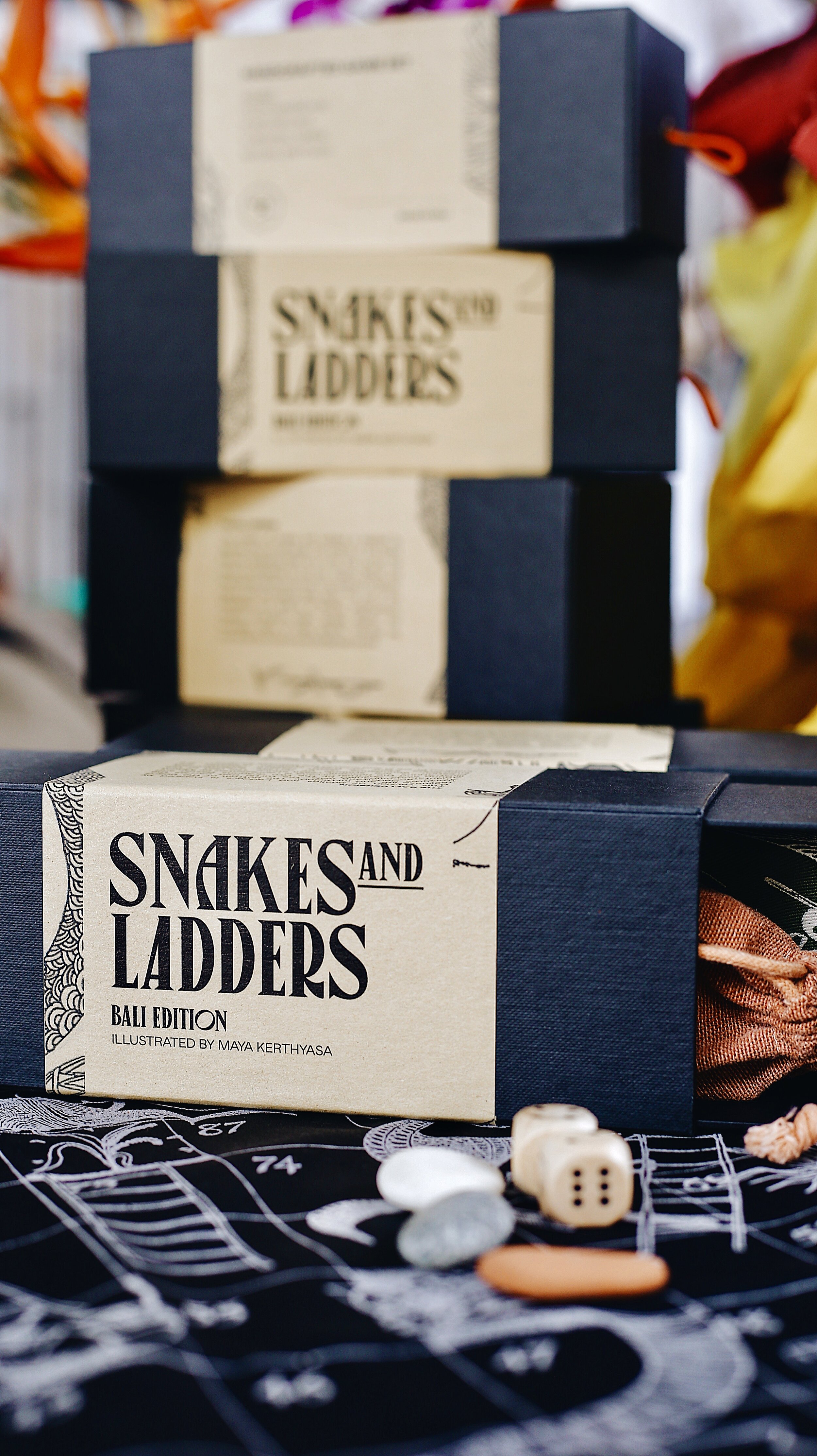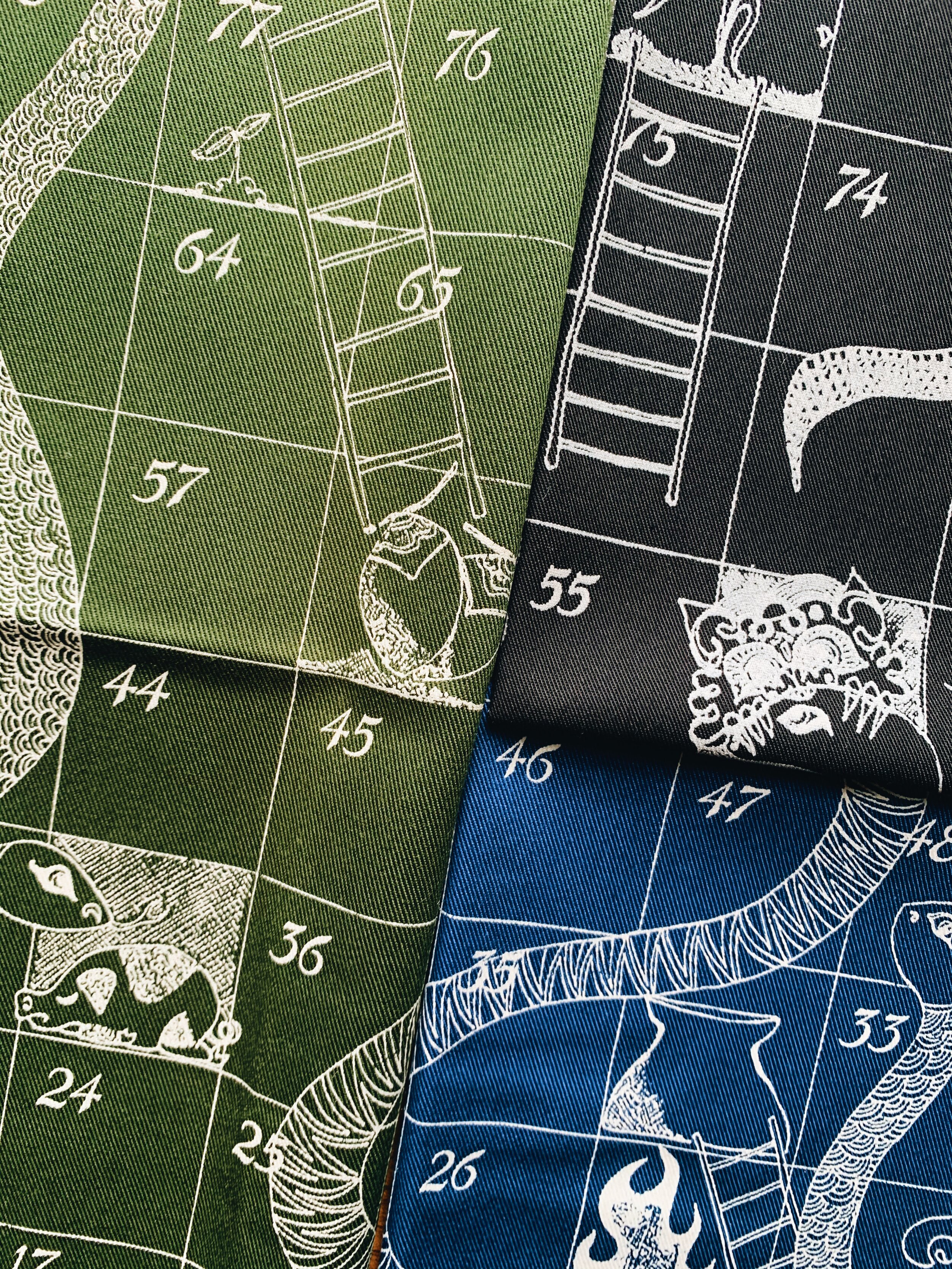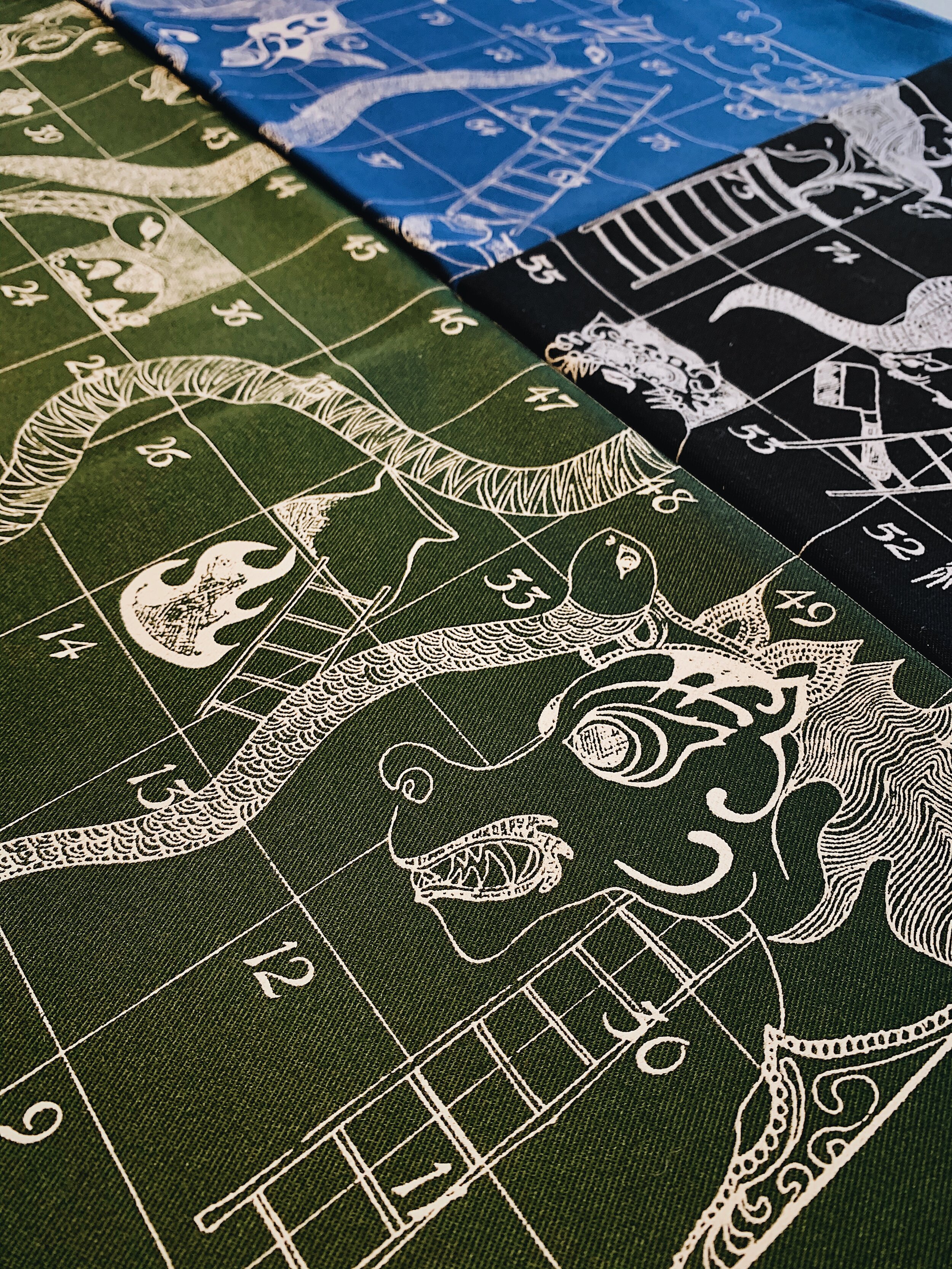Behind the design: Snakes and Ladders Ubud Folklore featuring Bagus Ari Maruta
/Welcome to Snakes and Ladders: Ubud Folklore! Featuring original color-soaked artwork by Bagus Ari Maruta, a third generation Ubud artist, this game highlights Balinese symbols of safety and protection. The board features 10 coiled crowned snakes, guarded by a Bhoma looking down on the game as mythical Balinese birds peer up to watch over your progress.
“In my opinion, Snakes and Ladders is a game about life, where we try to achieve our expectations, like reaching the final square. In life there are ups and downs. That is not a sign to give up. You have to keep trying to achieve your expectations. In this Snake and Ladders, I took a Balinese icon we often see at the entrance to a house or to a temple. These carved stone guardians (Bhoma, dragons and mythical birds) symbolize safety or protection from evil and malevolent spirits.”
About the Artist:
Bagus Maruta is part of a new generation of Balinese artists. He was born in the hub of Ubud, which earned its reputation as the epicenter of Balinese art by the close of the 20th century. Maruta is a third-generation artist, traditionally trained by mentors and then at the Indonesian Art Institute. His artwork, characterized by vivid and exuberant colors, serves as a canvas for the meeting of diverse influences. Bagus Maruta's artistic creation is an Ubud Snakes and Ladders game that bears the unmistakable mark of his artistic expression.
About the lore:
In Balinese mythology, Bhoma is the son of Dewa Wisnu and Dewi Pertiwi, the god of rain and the goddess of earth. One day, when Wisnu was digging the earth in the form of Varaha, his avatar in the form of a wild boar, he encountered a beautiful earth goddess named Dewi Pertiwi. The encounter leads to a union (and torrents of stormy rainwater entering the earth) between Wisnu and Pertiwi producing a terrifying son named Bhoma. The figure of Bhoma that was produced by this union is seen as the growth of vegetation or forest (Vanaspati) as a result of the earth receiving the rain water. The word Bhoma came from the Sanskrit word bhaumá, which means something that grows or is born from earth.
The head of Bhoma can be found carved at temple gatez which marks the entrance to the holiest part of the shrine and at the base of the padmasana, the holiest and most central shrine in Balinese temples. The head of Bhoma is also seen in the Balinese cremation towers.
About the games:
This is part of a series of Bali games by Toko Elami. Each of the games features originally commissioned artwork from a Bali-based artist. Through the artwork, the artists explore different aspects of Balinese culture and life through their eyes. Living in Bali surrounded by Balinese myths and symbols, we've always been aware of the stories behind each one of them. We wanted to create unique products that capture the imagination for both kids and adults alike, while promoting cultural and traditional motifs to sustain Balinese heritage.































